




What will it mean for the art industry?
Happy Pumpkin Season! A very warm welcome to Treat’s sensational seasonal Halloween edition.
In this collectors’ special, we’ll be showcasing our best Treat models in-and-out of their spooky outfits, alongside some appropriately horror-themed digital art NFTs. All of which can be collected and (hold on for dear life) HODL’d as extremely limited edition NFTs at the Sweet Shop and OpenSea.
No tricks, only treats, so indulge your dark desires. Don’t be scared; there’s no better time of year to add a sexy witch, vampire, Daemonette, or goblin waifu to your NFT collection!
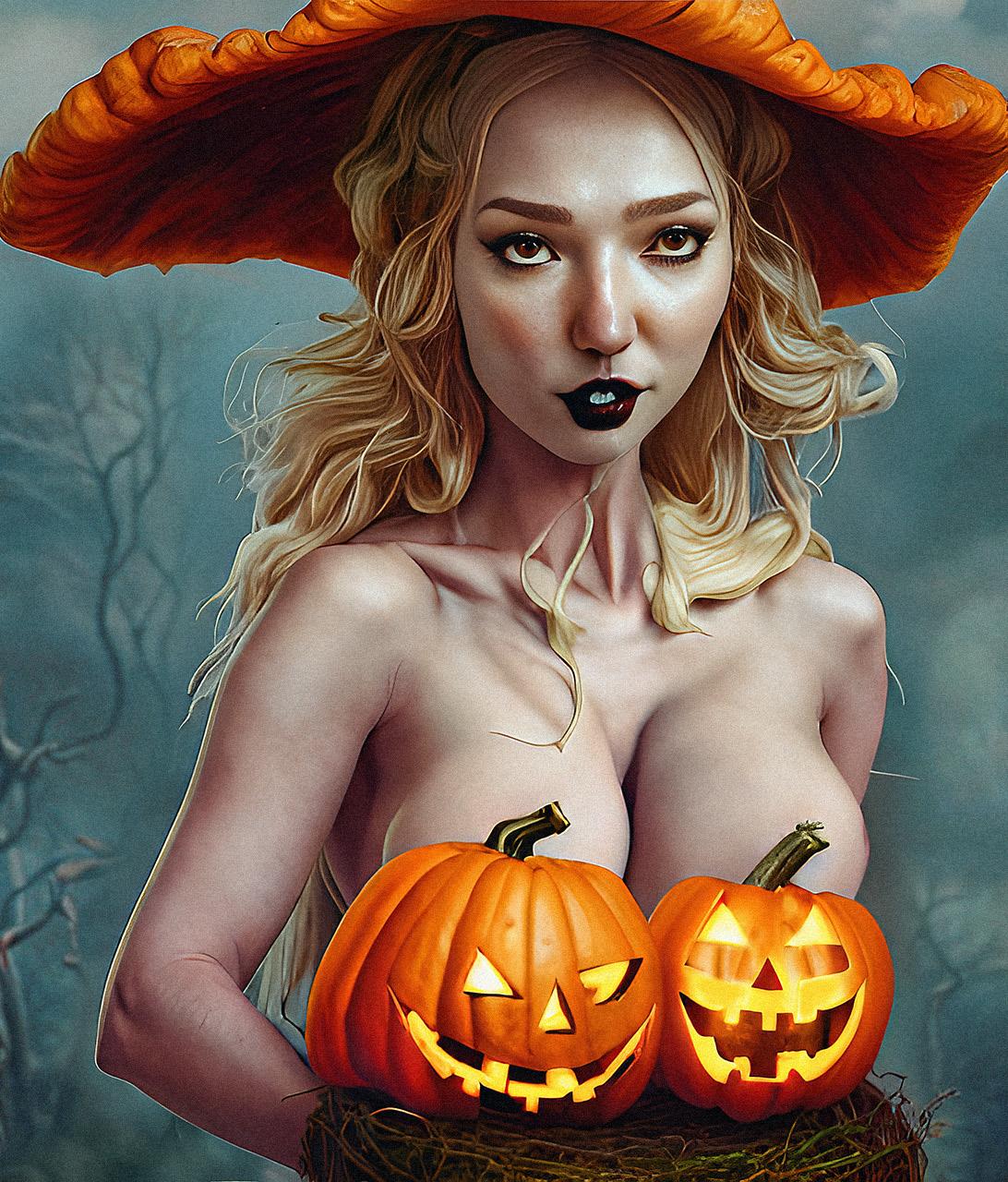
Forget the mall and the latest fads, we are in the era of Web3 and the Metaverse. No longer do you need to fret about your wardrobe or worry about what to wear for your next Zoom call with your remote working boss. You can hit the virtual closet, pick yourself an avatar (a digital character that represents you online), change your skin tone, makeup, hair style, and truly shine in a fully rendered 3D designer look of your choice. You literally are what you wear.
 Pumpkins out for our seasonal Treats in our Halloween special edition!
Pumpkins out for our seasonal Treats in our Halloween special edition!
Nike, Gucci, Ferrari, and Luis Vuitton are just a few of the big beasts of the luxury brand market banking on the shiny and chrome future of digital fashion. They are betting that you’ll be as proud of your avatars’ style in the interlinked extended reality of the Metaverse as you are when hitting the high street or a club. The concept is that you’ll strut your best stuff in virtual reality (VR), in game worlds, on social media and video sharing, and soon in real life (IRL) with augmented reality (AR) mobile apps, smart watches, and glasses.
Virtual product brands for virtual personas’ expressing themselves in virtual worlds may sound very much like the “Emperor's new clothes” to some, but for the next generation - who will spend more of their waking lives online, rather than offline - it may well become as familiar and routine to slip into their alter-ego as brushing their teeth before starting the day. For technology platforms like Meta and Microsoft, the potential of Metaverse markets and the predicted growth in digital fashion could be very big business.
However, the mechanics of creating and outfitting avatars are nothing new to the video game industry, where player immersion and roleplaying have
always featured heavily in aesthetics and gameplay. From the alternate lifestyle choices of “the Sims", released twenty two years ago, to the in-game wardrobe and accessories in “Animal Crossing”, and the market for quality skins (player made texture maps) in “Counter Strike”. The games industry has always been a major driver for innovation in technology and e-commerce. The monetization of items (including virtual makeovers) in games like "Overwatch," “Mobile Legends," and “Fortnite” already generates billions in revenue for their publishers.
As with the buzz around NFTs in 2021, which subsequently cooled, the mainstream acceptance of virtual-wearables may still be a matter of polite curiosity. Until there is proven utility and scarcity to drive adoption. Currently, the desirability of wearable art still seems too esoteric and niche to market successfully to the general public. The crypto markets and the video game industry have blazed trails in monetizing custom creator content. Now it is up to the publishers and major labels to create their own compelling commercial reasons for people to buy into their haute couture worlds.
Ironically, at all the major cosplay events and competitions around the world, characters from the most popular video games are en vogue. Fashion imitates virtual art, as Web3 imitates real fashion. Maybe we are living in the Matrix?
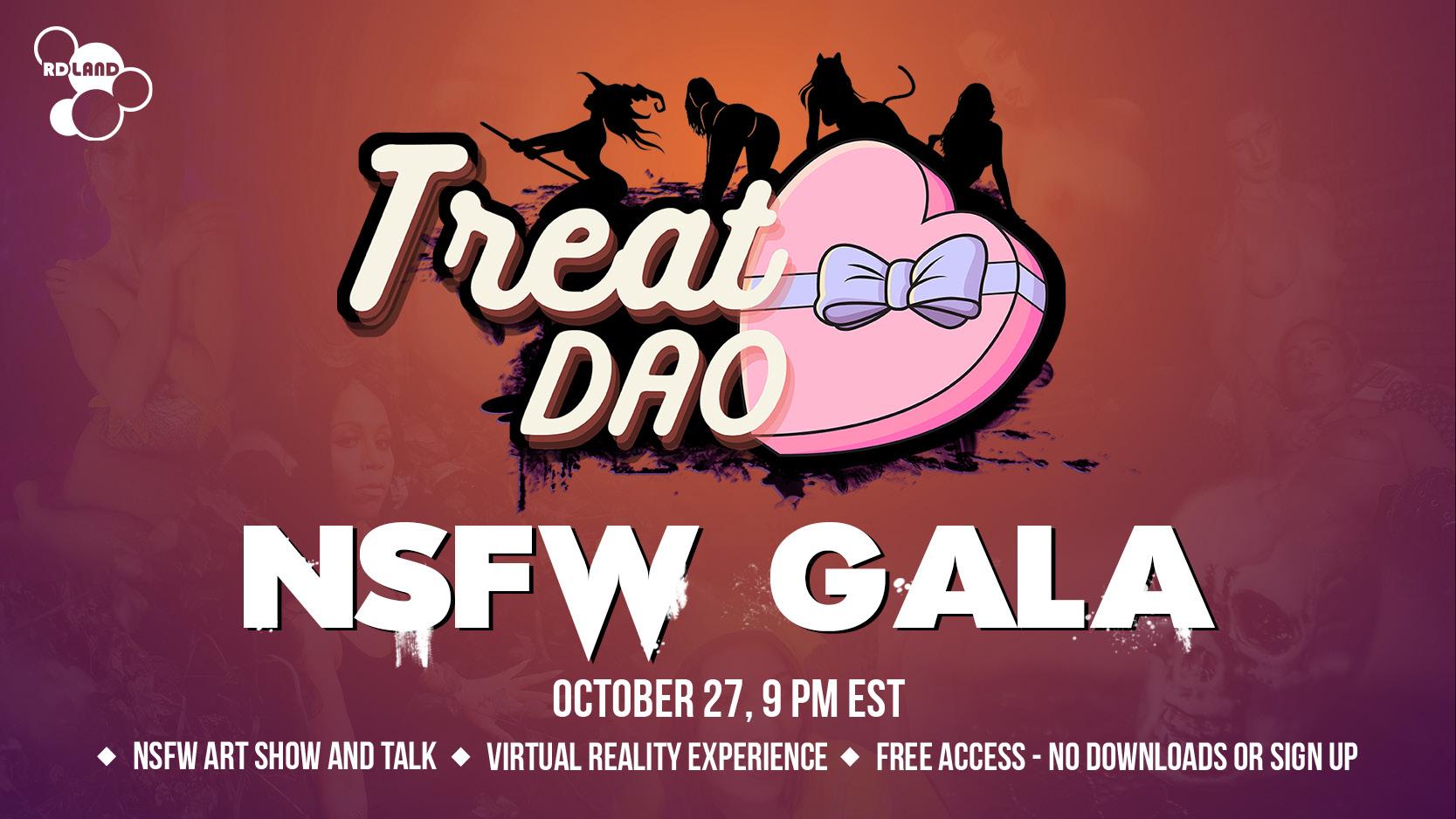
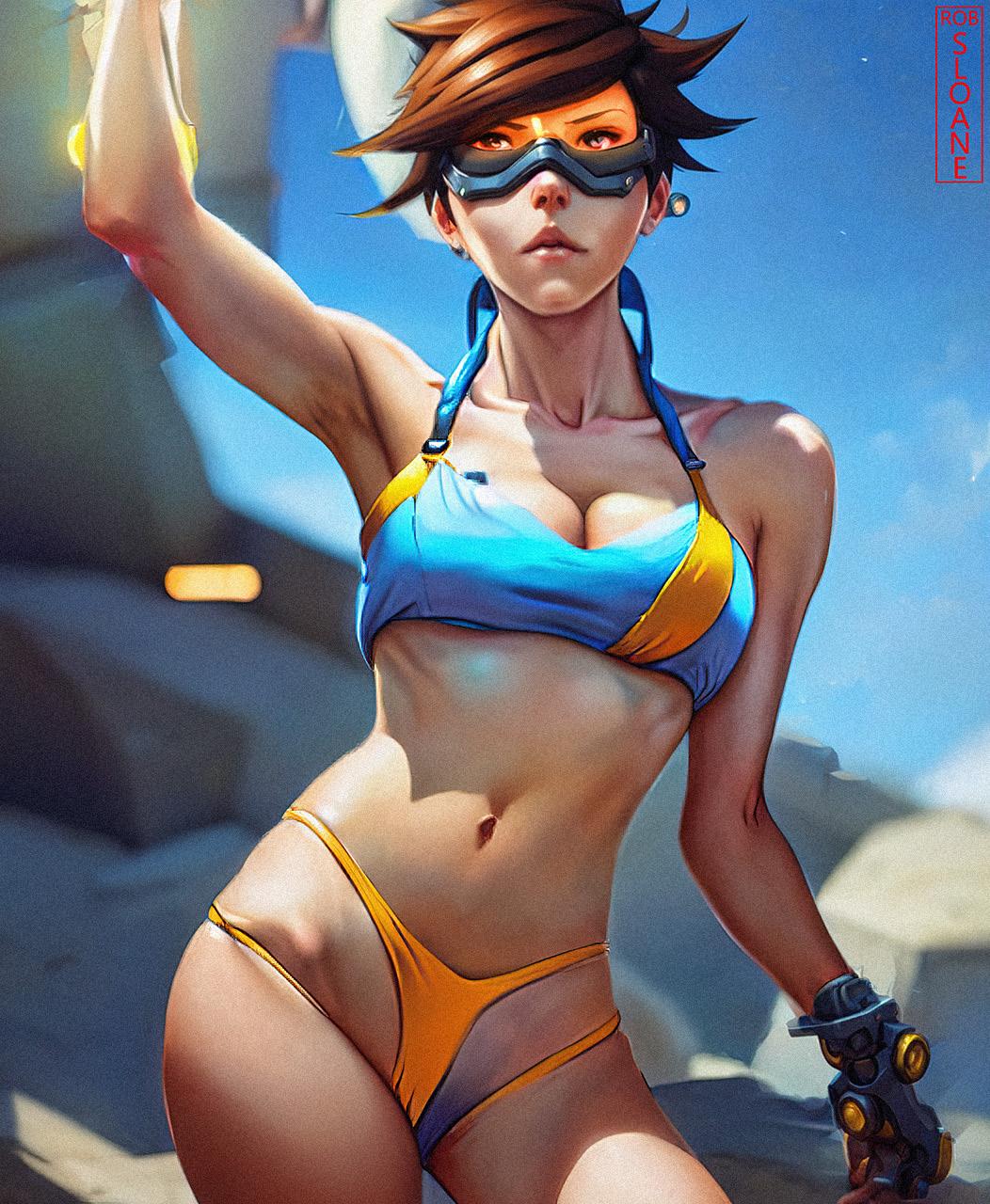 Popular video games like Overwatch are a huge influence on cosplay in real life
Popular video games like Overwatch are a huge influence on cosplay in real life
It’s impossible to deny that cosplay and gaming culture have merged. Even the on-trend OnlyFans girls are advertising the fact that they are willing to be your anime gaming waifu (be still our beating hearts!). You may just be curious about what games and characters are the hottest in the cosplay community. If so, you are in the right place as we’ll select the trendiest and most in fashion characters to cosplay in 2022!
If you love games and cosplay, you are already 80% of the way to joining a huge worldwide community of like-minded cosplayers. In-person conventions and comic cons are where to meet, get photographed, and strut your style. The devoted flock to social media forums, which are always buzzing with the latest trends and photos. Whether you are planning to make your own costume or looking to buy one, the choices can seem overwhelming.
If you are feeling the itch to start cosplaying and want to get started, then we’ll be delighted to help inspire you. Join us as we help you choose a video game character that may well be your perfect alter-ego (or latest crush).


The release of the third “Bayonetta” game on October 28, 2022 is right around the corner, so now is the perfect time to channel your inner Umbra Witch. She’s beautiful, sexy, and powerful, and her risque outfits throughout the gaming series provide plenty of style choices. Especially if you identify as the strong gothic type of female character and want that “Devil May Cry” symmetry with male cosplayers. The designs aren’t too complex to create and accessorize for yourself, and the games have been available long enough that you can find pre-loved outfits to buy online.

We’ve featured the latest “Resident Evil Village” game in our scariest Halloween gaming feature in this special edition already, but we really can’t resist another chance to worship before the twin peaks of the darkly gorgeous Lady Dimitrescu this season. Yes, we know in her final form she’s really a gigantic demonic evil-cthulhu-tentacle-winged-monster violently trying to suck out your brains (nobodies perfect), but she’s also the sexiest boss character to cosplay this season! So grab the biggest hat you can buy, get some fake pearls, black gloves, and rock that art nouveau 1930’s style.
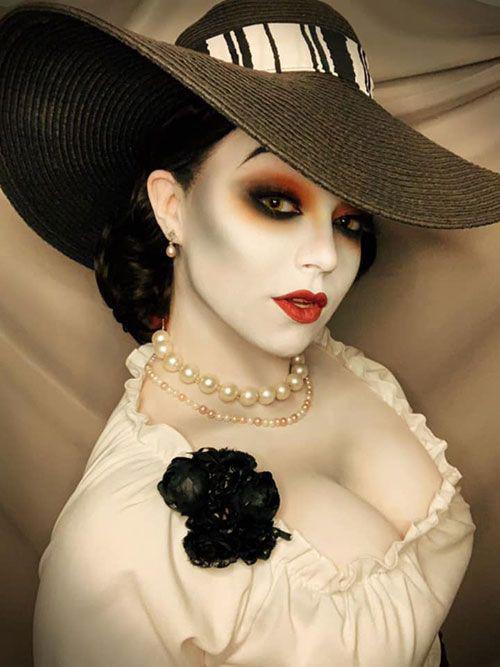
“Apex Legends” is a popular game with loads of fabulously designed playable characters. That means a lot of choices to scratch your costume hero itch. If you are heading to a multi-day event, you can swap between characters and show off your versatility. You’ll also be able to group up with other “Legends” from the game and form your own super team. The community for the game is huge online, and you are sure to find others to hire or buy costumes and accessories and make friends to join your “Apex” team.
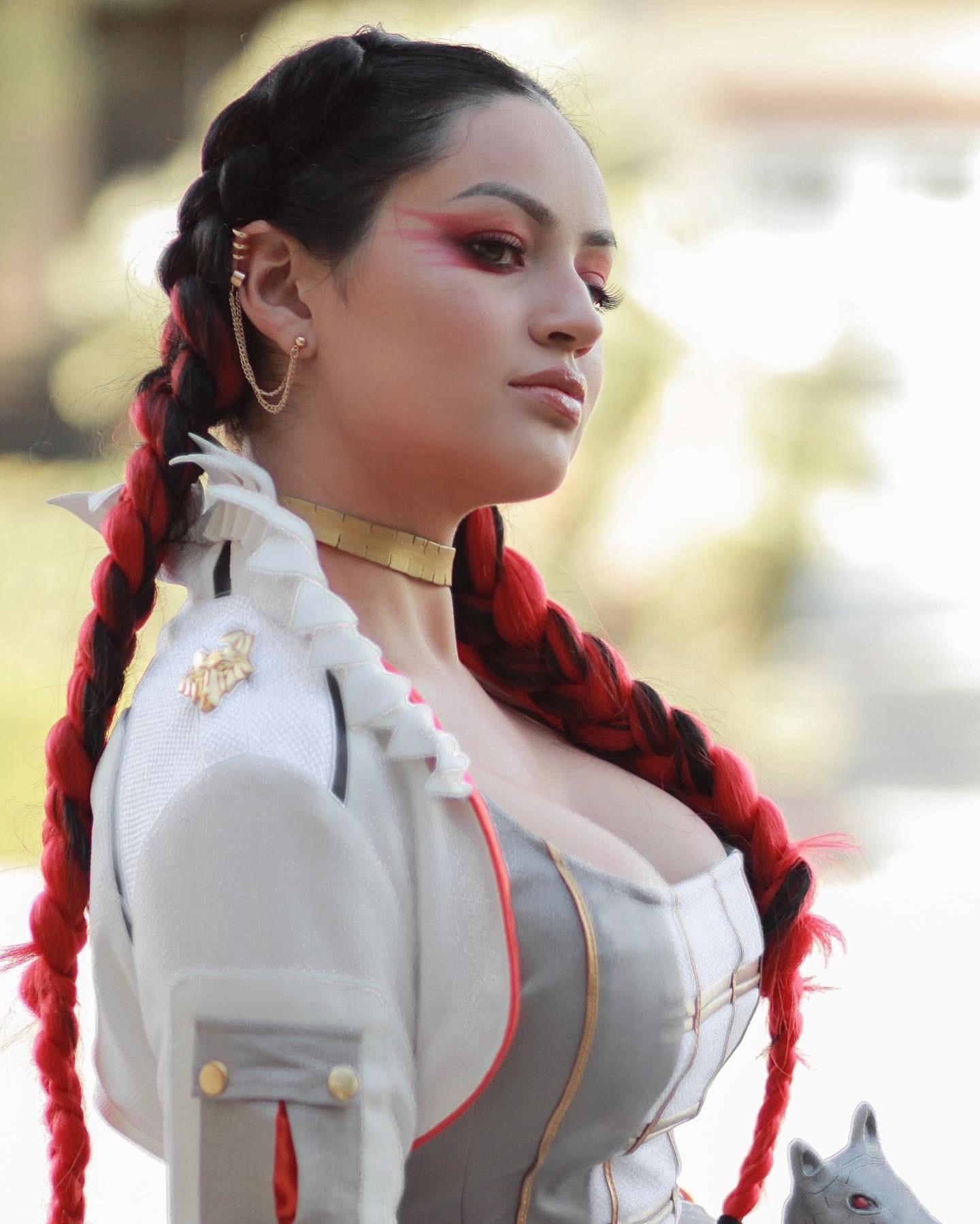 Loba Andrade cosplay from Apex Legends -image courtesy of Reddit r/LoboMains
Loba Andrade cosplay from Apex Legends -image courtesy of Reddit r/LoboMains
“NieR Automata” is a series of legendary Japanese video games. If you go to a gaming convention or comicon, you are very likely to see several 2B’s (not pencils, but sexy humanoid androids), or a 9S. NieR cosplay is so popular that you can easily find pre-loved costumes or buy manufactured outfits and accessories from online shops. The 2B look is a staple of the community and always garners a lot of attention from photographers and fans alike.
 2B from NieR Automata is a sexy female android, and a fan favorite at conventions -image courtesy of Pinterest
2B from NieR Automata is a sexy female android, and a fan favorite at conventions -image courtesy of Pinterest
It’s no doubt that “Genshin Impact” has become a 2022 video game industry titan. The game features more than 30 neo-fantasy styled characters. Many of these are already dominating the online cosplay scene, and have a major influence on cosplay team up’s at conventions. Best of all, there is no need to track down the things you need, as the costumes are readily available to buy directly from Amazon.
 The perfect Genshin Impact cosplay available off-the-shelf at Amazon.com -image courtesy of Amazon
The perfect Genshin Impact cosplay available off-the-shelf at Amazon.com -image courtesy of Amazon
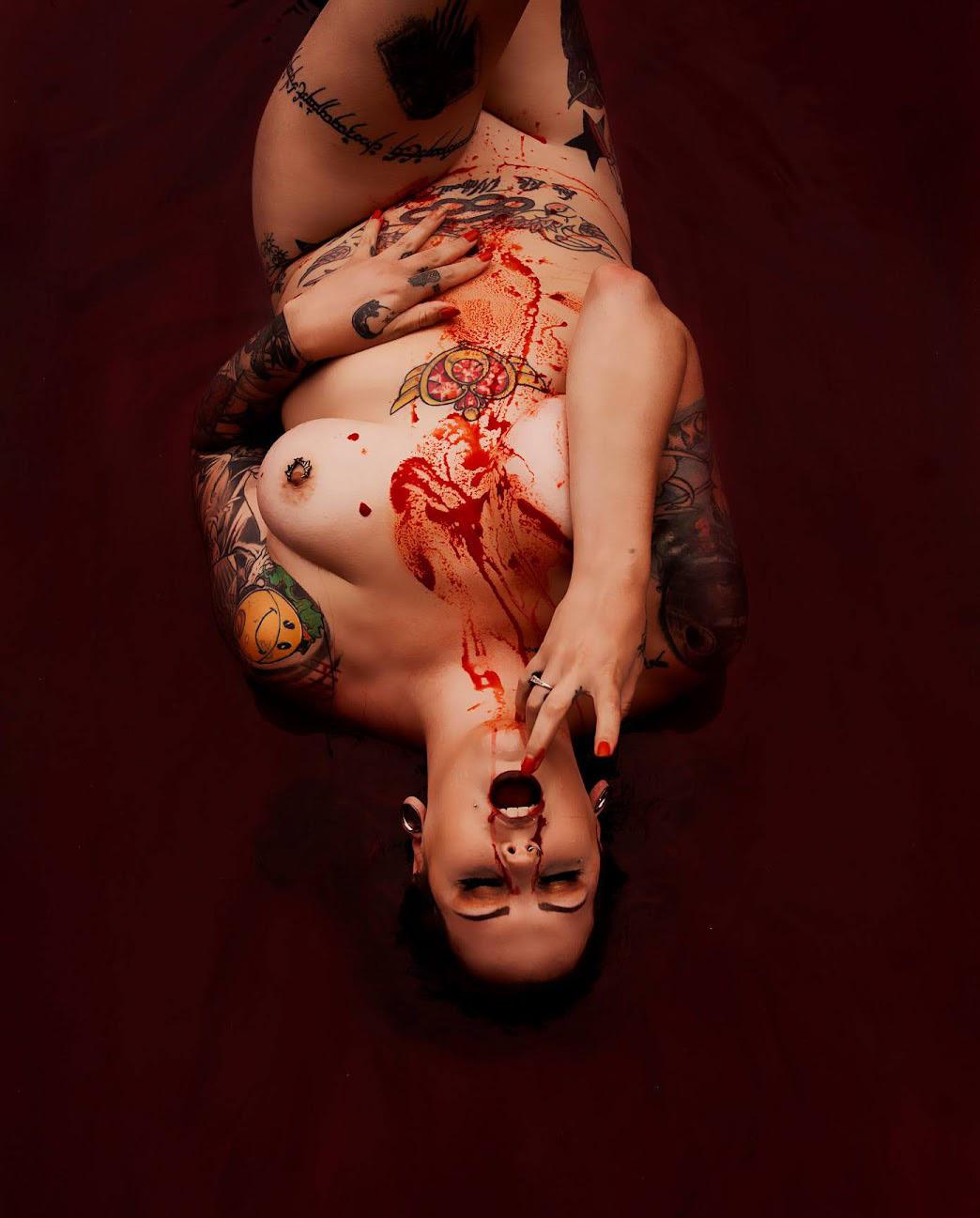
Our mission at TreatDAO is to support and promote our content creators and their fans, and we understand that cosplay is all about role-playing and gaming is all about fun wish fulfillment -so if you combine both with OnlyFans, what happens? Well, you get the opportunity to meet a naughty, naked version of Lara Croft or your own Pokemon playing Waifu. What could be better?
More and more savvy cosplayers are turning content creators and leveling up (and making good money) on platforms like TreatDAO and OnlyFans to offer their social media followers access to exclusive NSFW NFTs, pictures, videos, and VIP access to one-on-one chats.
Here are a few of our favorite sexy Halloween cosplayers to follow, subscribe to, and adore:

How OnlyFans can power up your cosplay obsession and make a star of your Virtual Alter-Ego
Luce is a top-draw international cosplayer who puts passion, effort, and sex-appeal into every character she dresses up and dresses down. The perfect balance between the art of costume play and the sexy delights of exhibitionism.
Luce Cosplay offering us tricks and treats -image courtesy of Instagram
Instagram: https://www.instagram.com/luce_cosplay Onlyfans: https://onlyfans.com/lucecosplay
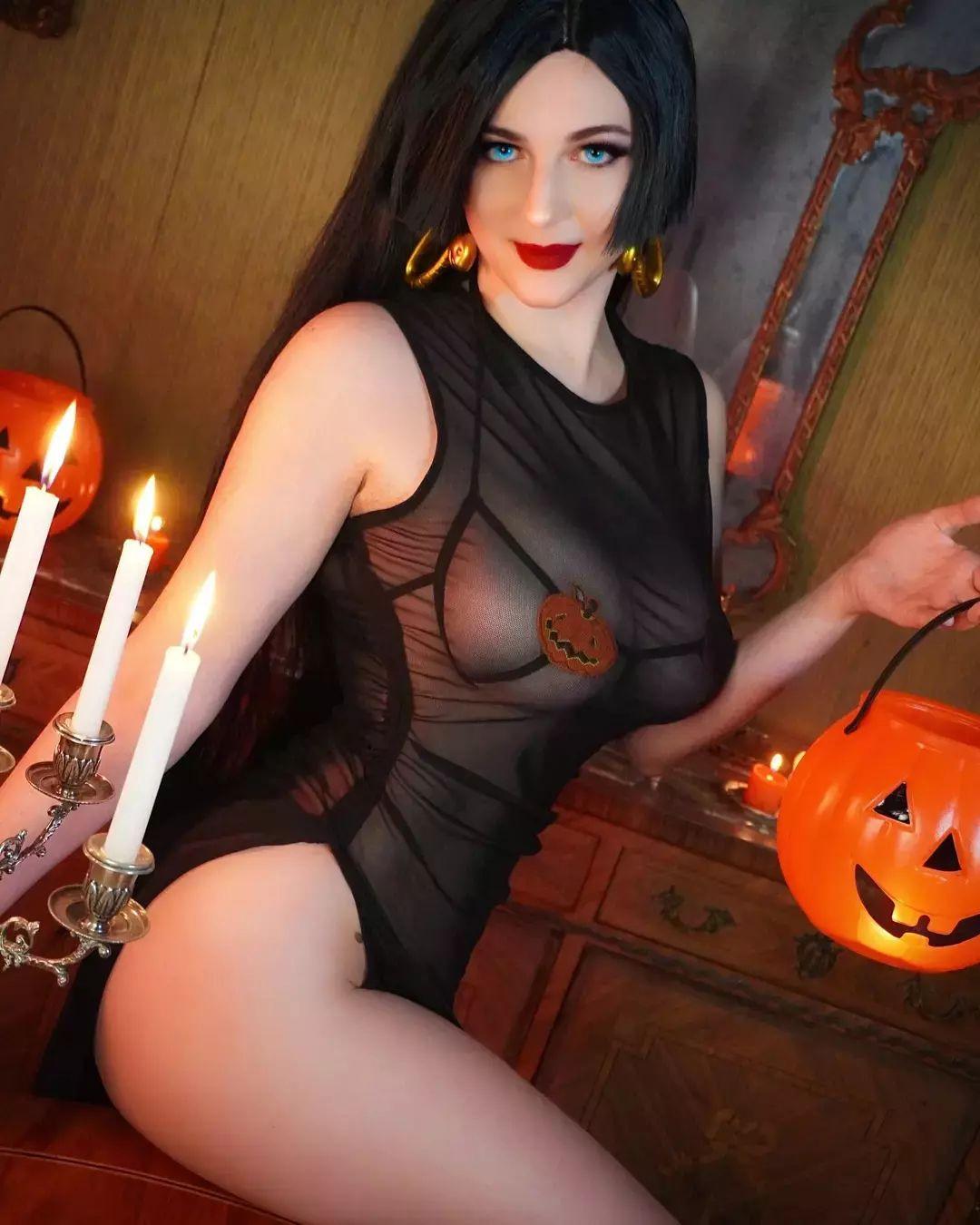
Sofia is the more than ample embodiment of the cosplaying Hentai Waifu. Her specialty is bringing all your wildest fantasies to life. Want to see the Scarlet Witch go all ‘Girls Gone Wild’? She’s got you covered. Follow her for all the hottest news, nudes, and lewds!

If you are into manga and anime, then Paige is your ideal hentai content creator and one of the kinkiest and sexiest cosplayers on OnlyFans. Dressed or undressed, her video clips and photos are bound to blow your mind (and your wad).
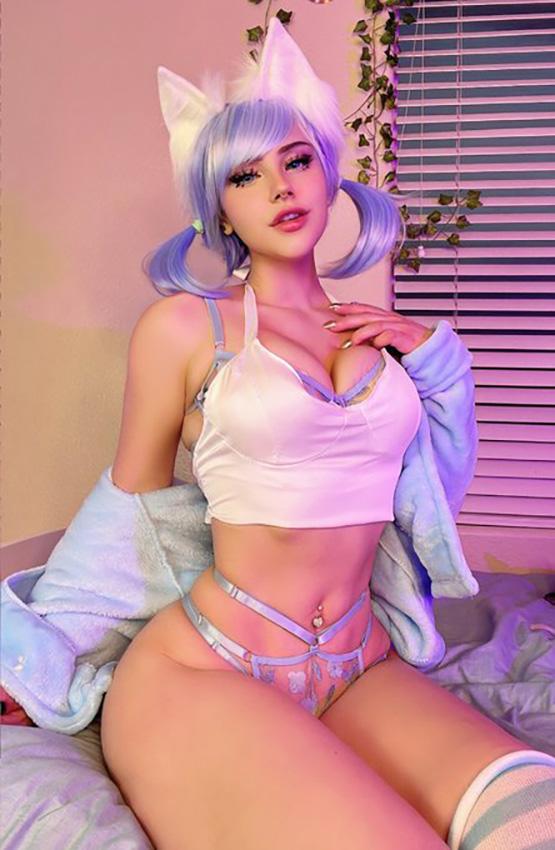
Paige Macky is purrfect in sexy kitten cosplay -image courtesy of Twitter
Instagram: https://www.instagram.com/paigemacky
Onlyfans: https://onlyfans.com/paigemackyfree
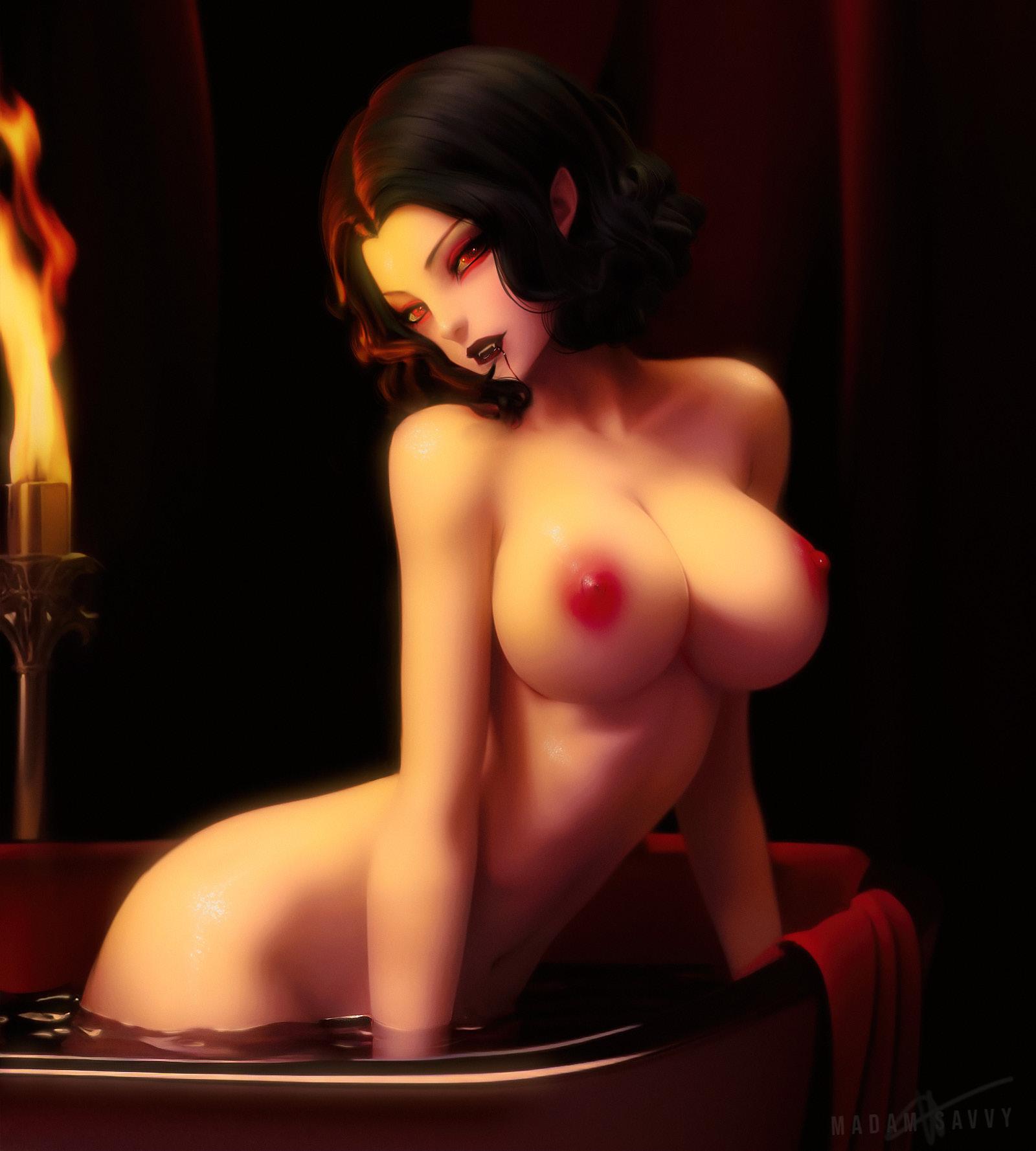
Artists, designers, architects and even photographers are reeling from future shock, as AI systems Dalle-2, Midjourney, and Stable Diffusion explode into the creative industry.
 Astronaut Encounter concept art by Rob Sloane with workflow assets created with Stable Diffusion (1.4 weights)
Astronaut Encounter concept art by Rob Sloane with workflow assets created with Stable Diffusion (1.4 weights)
We live in interesting times. Artificial intelligence (AI) is becoming more prevalent in our daily lives, from the way our phones interact with us to the logistics and transportation of goods around the world and even the rapid development of life-saving medicines and vaccines.
When we think of corporate AI, we tend to imagine a huge boxy server with blinking lights automating the daily routines of hundreds of employees and collating and crunching data at hyperspeed to increase efficiency and profits. We like to imagine that the work that requires ingenuity, creativity, feeling, training and experience, and subjective
understanding is uniquely human and could never be replicated by machine code. Some things can only be done by real artists, such as composing music, architecture and design, writing a short story, making a movie, and painting artwork.

These historic assumptions are being tested by the latest iterations of AI art tools, which are challenging our long-held assertions about art and creativity itself. The introduction of image generation tools such as OpenAI’s Dall-E 2, Midjourney, and Stability’s Stable Diffusion has opened a Pandora’s Box of possibilities (and challenges) for the art industry. Each AI works by interpreting a simple text prompt into a visual approximation, taking into account the subject, the composition, and the art style. In most instances, the process can be repeated over and over until the image generated looks right, and then edited, upscaled, and used for commercial purposes.
Professional artists are growing increasingly concerned about their relevance as AI art directly impacts on people working in entertainment, video games, advertising, marketing, and publishing industries.
Recently, Jason Allen became controversial for entering a piece into the Colorado State Fair titled “Théâtre D’opéra Spatial," which won the prize for digital art. The piece was created with Midjourney AI and the subsequent uproar among artists has led to AI art being banned from many creative forums and future art competitions.
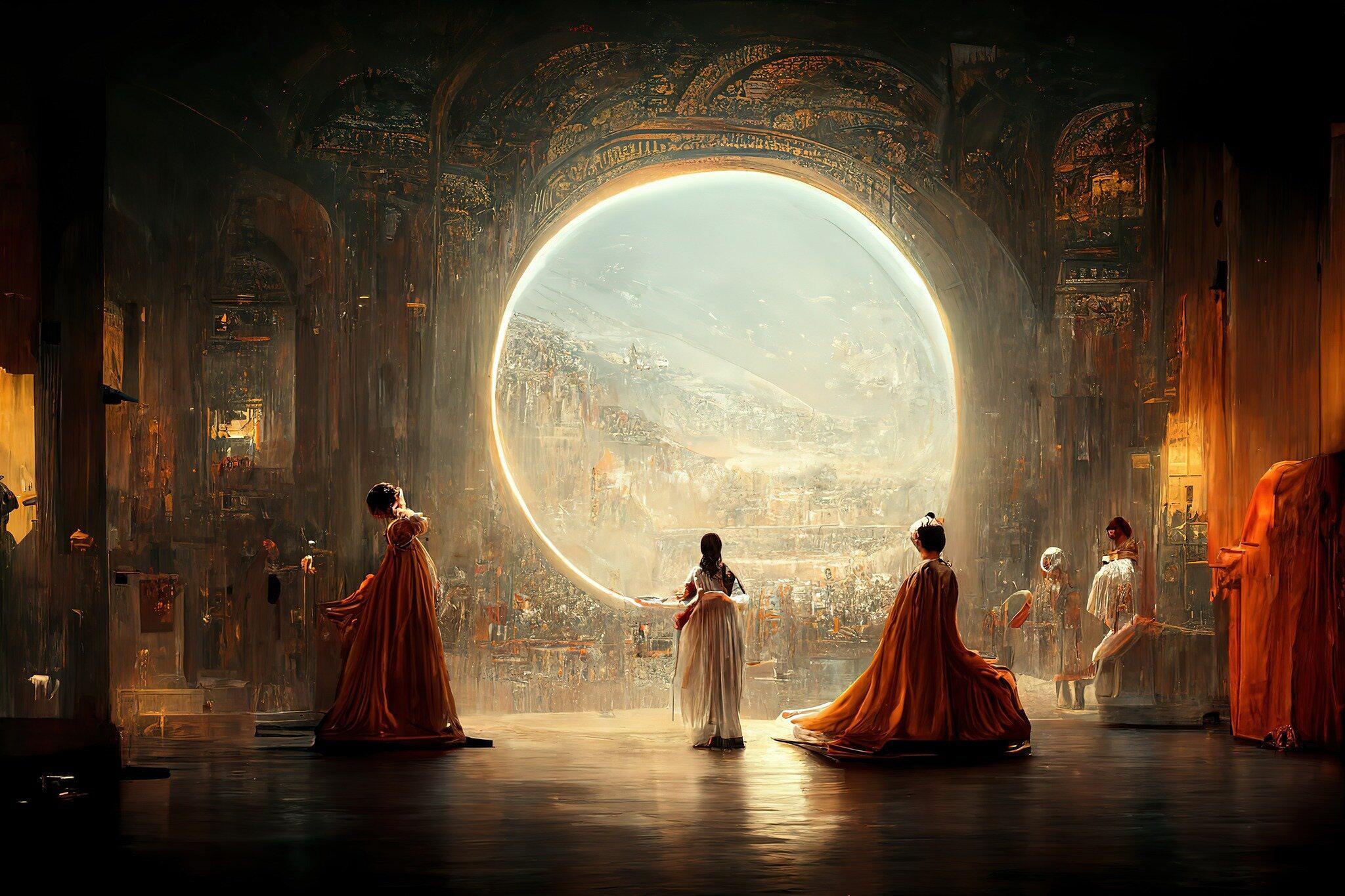
“The progress (of practical AI art implementation) is exponential,” says Jason Juan, an experienced art director whose clients include Disney and Warner Bros. He continues, “It will allow more people who have solid ideas and clear thoughts to visualize things which were difficult to achieve without years of art training or hiring highly skilled artists. The definition of art will also evolve, since rendering skills might no longer be the most essential.”
An early adopter of digital techniques in the 90’s was the fine artist Dave McKean. He says on the issue, “Why would anyone pay to have an artist design a book cover or album jacket when you can just type in a few words and get what you want?” He continues, “This will feed an increasingly
rapacious marketing department that wants to see 50 comps (compositions) of everything, and now they can have unlimited comps.”
He makes an important point. We accept AI taking over boring, repetitive, and soul-destroying jobs like customer service and accountancy, but the biggest impact will now be on the creatively rewarding careers that people study their entire lives for and incur massive student debts to qualify for. We find meaning in the effort to create art, CGI, music, writing, film, and photography, and when visionary artisans are no longer required, corporate producers and publishers gain complete control.
For some traditional design jobs like marketing illustration, logo-making, and concept art, the question of AI art is existential, as these workers rely on an economy based on low-cost fast turnaround gigs. The issue has become international, as gig art jobs are often relied upon in low-wage markets in Asia, Africa, Eastern Europe, and South America.
There is an argument to be made that an AI art generator is simply a practical tool like a paintbrush or a graphics tablet. However, that’s an argument that is increasingly hard to justify as the sophistication of machine learning continues to evolve with each generation of the training model. The AI literally learns from the best artists and applies their techniques and styles to animation, 3D graphics, and video creation.
It’s not just the generated art that has become big business, but the text prompts that create specific images are becoming a sought after commodity. PromptBase is an online market for monetizing the imagination that goes into “prompt crafting”.
So, what does a typical text prompt look like? Here is an example from the online prompt search engine Lexica.art showing how a combination of words is used with a seed (a point of reference to start a generation), a scale (which helps guide the diffusers), and the resulting image (below) as created with Stable Diffusion.
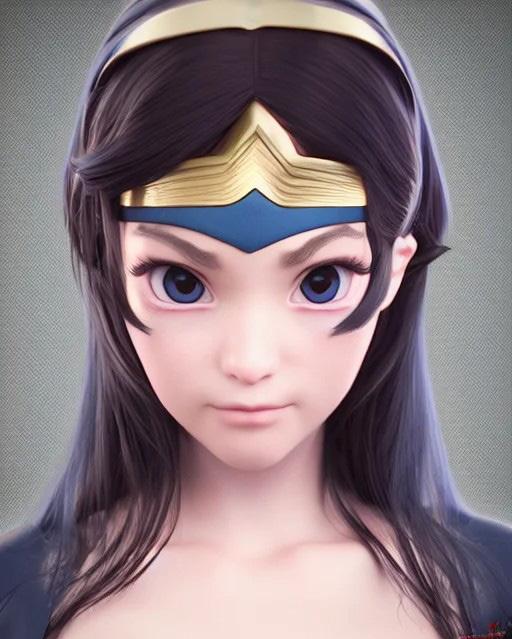

David Holz is the founder of Midjourney AI. He said in a recent interview for Forbes, “Right now, our professional users are using the platform for concepting (creating original ideas and concepts). The hardest part of [a commercial art project] is often at the beginning, when the stakeholder doesn’t know what they want and has to see some ideas to react to. Midjourney can help people converge on the idea they want much more quickly, because iterating on those concepts is very laborious.”

Browse any of the available prompts commonly used to generate painted concept art, and you’ll immediately come across recurring artists’ styles.
Those getting namechecked are: “Magic: the Gathering”’s Greg Rutkowski, Artstation’s own Stanley “Artgerm” Lau, James Gurney, and, ironically, Czech Art Nouveau grandmaster Alphonse Mucha (who is probably spinning in his grave).
 Detailed concept art for animation, video games, and movies is expensive and time-consuming.
Detailed concept art for animation, video games, and movies is expensive and time-consuming.

This raises an ethical and legal question. Should an AI model that has been trained on a living artist's style and body of work be subject to licensing? Are there copyright considerations? How will it impact their brand, and even their search ratings?
When asked for his opinion on being the big daddy of AI art, Greg Rutkowski was far from flattered and said, “I’m very concerned about it. As a digital artist, or any artist, in this era, we’re focused on being recognized on the internet. Right now, when you type in my name, you see more work from the AI than work that I have done myself, which is terrifying for me. How long till the AI floods my results and is indistinguishable from my works?”
In June 2022, Cosmopolitan released its first magazine cover generated by an AI program named DALL-E 2. However, the AI did not work on its own. Video director Karen X. Cheng, the artist behind the design, documented on TikTok what specific words she used for the program to create the image of an astronaut triumphantly walking on Mars:
A WIDE ANGLE SHOT FROM BELOW OF A FEMALE ASTRONAUT WITH AN ATHLETIC FEMININE BODY WALKING WITH SWAGGER TOWARDS CAMERA ON MARS IN AN INFINITE UNIVERSE, SYNTHWAVE DIGITAL ART.
-KAREN X. CHENG
‘‘ ‘‘
 The Dall-E 2 generated cover of the June edition of Cosmopolitan Magazine Magazine
The Dall-E 2 generated cover of the June edition of Cosmopolitan Magazine Magazine
Dall-E 2 can output photoreal results. It appears to have been trained more on photography than on illustration. It is already quite capable of replacing the need for stock image libraries entirely. This raises an obvious threat to photographers. Many of whom consider royalties on their stock photography as their bread-and-butter earnings. Photographers, who have invested many thousands of dollars in training, equipment, software, studios, transport, models, and products, may find their work mimicked and then superseded by AI. After all, there is no budget limitation when the AI can shoot anything, in any location, at any time of the day.
 When a photograph isn’t a photograph -AI art generated for TreatDAO by Rob Sloane
When a photograph isn’t a photograph -AI art generated for TreatDAO by Rob Sloane
AI art is already a major disruptor in the design industry, including the conceptualization of exotic settings as well as vivid concepts of future buildings and architectural styles. The good news is that artificial intelligence art will not directly replace architects anytime soon. According to an Oxford University study, architects have one of the lowest replacement rates (1.8%), placing them in a relatively safe position alongside stylists (2.1%), aerospace engineers (1.7%), curators (0.7%), microbiologists (1.2%), theatrical makeup artists (1%), anthropologists (0.8%), and choreographers (0.4%). All of these are unusual jobs that require a high level of interpersonal interaction and have a low percentage of repetitive tasks. These are typically the most difficult roles to automate.
This is not to say that automation and artificial intelligence (AI) have no place in architectural design. Not at all. In many ways, artificial intelligence (AI) has the potential to streamline processes and revolutionize the field's productivity and imagination in the same way that building information modeling (BIM) and computer-aided design (CAD) software have rendered hand drafting largely obsolete.

In the current economic climate, construction and software development companies are incorporating AI into their business processes at a much faster rate than architecture firms - leaving many struggling to keep pace with change.
In the VR and AR powered realm of the Metaverse, the advantages of an AI that can rapidly build out worlds are obvious. It's only a matter of time before an AI generates designs and blueprints for an automated 3D printer to produce houses in our real world too.
Okay, we've established that AI image generators are coming into their own in 2022 and are frightening artists with their capabilities, but surely AI couldn't make a movie? Right?
The answer isn't a simple yes or no, but rather, as with most things in technology and science, not yet, but very soon.
 Architectural Prompt = “House overlooking the sea designed by Zaha Hadid” -Stable Diffusion
Architectural Prompt = “House overlooking the sea designed by Zaha Hadid” -Stable Diffusion
 AI-generated cinema posters reimagine Hollywood movie favorites -image courtesy of DesignBoom
AI-generated cinema posters reimagine Hollywood movie favorites -image courtesy of DesignBoom
Making virtual photoreal movies? Sure, we already have sophisticated gaming development kits, like Unreal 5, which includes a toolset known as Metahuman that produces very realistic human characters and motion captured animations. Though designed primarily for video games, directors are using the photorealistic Unreal technology to create Machinima, or software created movies.
Unreal technology is already in use by renowned Hollywood effects company Industrial Light and Magic for their Stagecraft virtual backgrounds seen in Disney’s popular “Star Wars: The Mandalorian” series.
Stability, the company behind Stable Diffusion, has already made the code, diffusers, and models available to the public. This has resulted in the creation of a slew of APIs that allow popular design packages like Blender and Photoshop to run Stable Diffusion as an add-on inside the application.
Most AI image generators include coordinates and keyframes for batch rendering of images for animation and video creation. These range from prompt-created zooming and rotating sequences of images to a style transfer function that applies the prompt's intent to existing images or video clips. Several recent music videos have used footage that has been enhanced with various AI styles for added visual flair.
-FABIAN STELZER, CREATOR OF THE AI MOVIE “SALT”‘‘
‘‘

So, just how impactful could AI art (and AI that synergizes with CGI rendering tools) be for the visual effects industry? Think about the credits at the end of every modern movie (no, not the mid-credits or post-credits teasers), but the hundreds of names that scroll past. The talented technical crew that made “Spiderman” swing above New York or made Thanos a credible on-screen antagonist for “The Avengers.” 90% of those names are extremely hard-working and under-paid people responsible for special effects, animation, concept art, CGI, and production design. These are serious people who have studied hard and grinded in low-paid gigs to hone their skills for years to land that dream job in Hollywood as a concept artist, character designer, or production lead.

To say the least, that’s a lot of people in the visual effects production departments who could soon be looking over their shoulders as a sophisticated AI with a model trained directly on cinematography, shot composition, animation, and visual effects is introduced to the industry. One that is guided by art direction prompts and the styles of named directors. Much as we see Alphonse Mucha used to style image generation, we may soon see Quentin Tarantino and Steven Spielberg using biased prompts for video generation. The studios, which are already known for their impossible deadlines and famed indifference to the working hours and conditions of their artists, wouldn’t hesitate to swap to technology that saves them both time and money.
This year, Fabian Stelzer (not a filmmaker) announced the all-AI production of a movie titled “Salt”. He’s already been active on the Saltverse Twitter, releasing short movies created with Midjourney, Dall-E 2, and other AI art generators. “Salt” is described as the world’s first AI-generated multi-plot film.
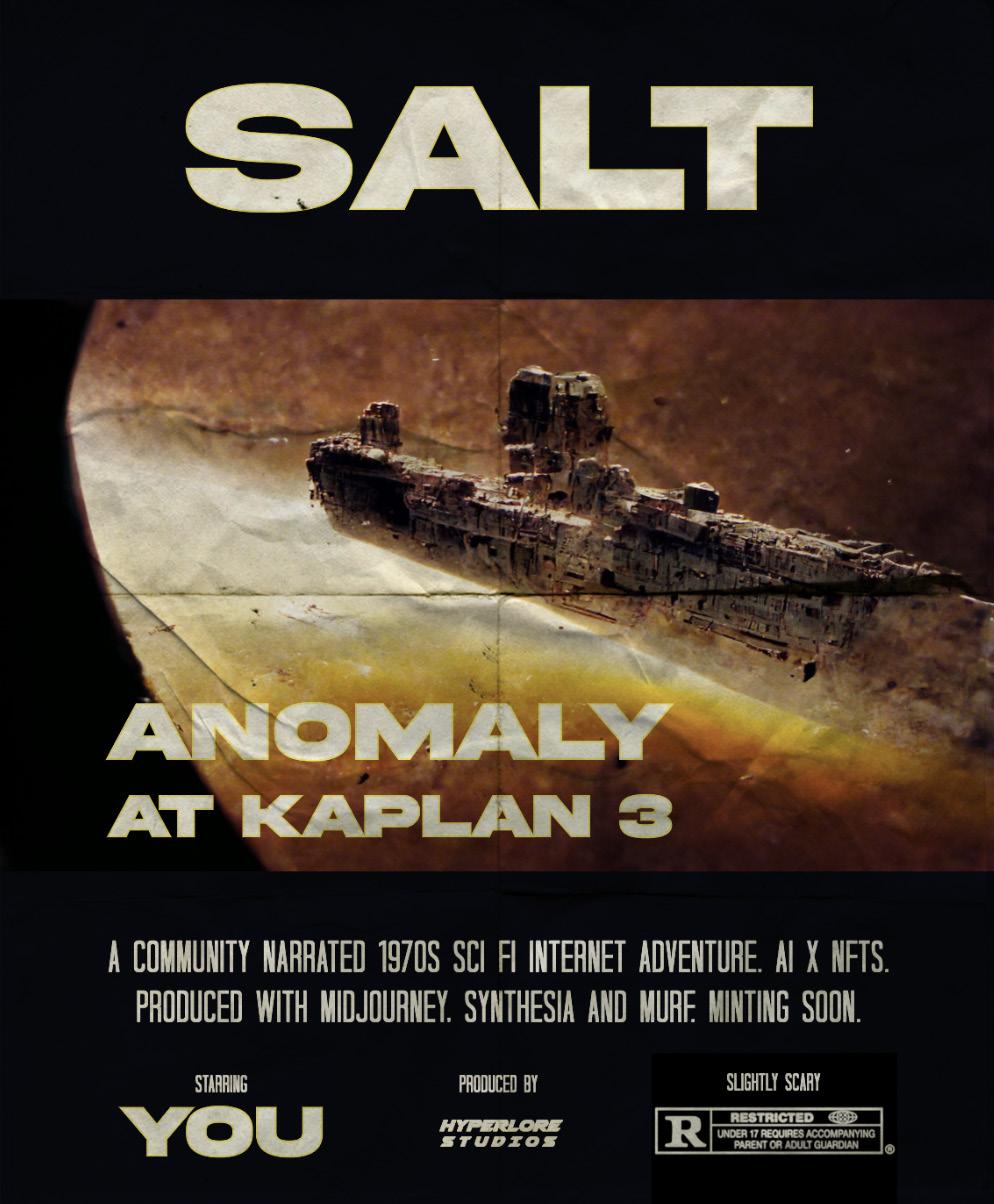 Salt is being heralded as the first all AI-produced movie -image courtesy of Twitter.
Salt is being heralded as the first all AI-produced movie -image courtesy of Twitter.
 Devan
Devan
"I can make a '70s sci-fi movie in my little home office studios if I want to," Stelzer said in a recent CNN Business interview. "And I can do more than a sci-fi movie." 'What's the movie in this paradigm, where execution is as simple as an idea?' I wonder. ’”
Savannah Niles is the director of product and design at Magnopus (an AR and VR experience company). She’s been following the progress of “Salt” and told CNN she views it as a prototype for the future of storytelling. Where AI helps to visually generate animation and video based on the assets it has been trained on and the ideas of people active in the narrative they want to have told. She believes that the types of tools already being used by creators like Stelzer will evolve to make it far more cost-effective and simply faster to produce films. Films that today are made by corporate studios, involving hundreds of highly skilled people, taking multiple years to finance and produce, and costing millions of dollars to budget.
It may still be some years off until we see an all AI-generated “Star Trek” movie with a deep-faked original cast, but that time is certainly in view. How we responsibly use a technology that, like the Genie in Aladdin, can make our every wish come true, is a question we will need to confront. We risk completely devaluing the art and culture of film, even as we decentralize and democratize the production process. When anyone can create and release their perfect fan fiction movie, it will undoubtedly cheapen the experience and alienate as many as it pleases. The creator is effectively a one man studio. The ramifications are profound: the impact it will have on the careers of the thousands of highly trained and talented technicians currently working in the film industry will be incalculable.
Aside from cinema and television production, the next logical step is for AI to generate complex mixed media content in the Metaverse. Building topography, housing, rare and common objects, video and audio content inside a virtual reality as NFTs powering a blockchain economy. To an extent, some enterprising Web3 designers are ahead of the curve, using generators like Dall-E 2 to rapidly create pixel art collectors' items for sale in their online games.

This is the current state of the discussion on AI Art. And we are just at the beginning. We can only imagine what wonders await us as new iterations and tools appear in the near future. The big tech companies are already competing head-to-head in the space with new AI image technologies incoming from Nvidia, Google, Meta, and Microsoft. “Text inversion” tools allow people to train models with their own user-created content, which is only going to refine and enhance the graphical fidelity and diversity of these already impressive systems further.
Other advances include "image2image", which takes your stick figure doodle in MS Paint and turns it into a baroque masterpiece. “Outpainting,” which extends an existing image outside of the original cropping, uses AI to fill in the missing blank spaces for you. Imagine a widescreen version of the “Mona Lisa” extended to include Leonardo’s studio and furnishings. "Inpainting", which does the opposite by allowing you to mask and com pletely replace an existing area of your image, for example, by changing an orange into an apple.
Our Treat hot take is that AI art has opened up new possibilities for everyone, no matter their artistic skill level. We support this decentralization and democratization of the creative process and the opportunities it will create. The centralized creative industry often mistreats artists, treating them as resources and their work as a commodity.
However, we also recognize the downsides; that a pushbutton generation of images has the potential to devalue art as a culture and, as a consequence, invalidate the training, education, experience, and value of these hardworking human artists. AI creations also blur the legal lines between ownership and licensing and threaten the livelihoods of the living artists who, without Consent, or consultation, is being used to help train the models. It does have a serious impact on an artist's ability to win commissions and will empower studios and publishers to cut the professional artists out of their future projects. This will in turn have serious implications for the originality and quality of future productions.
We are just at the beginning
This is a revolution that has happened quietly and suddenly, springing from obscure esoteric research papers to widely available apps in a matter of months. Legally, morally, and ethically, we are scrambling to keep pace. The models have no inherent sense of right or wrong, and can be prompted to create images of sexual abuse, violence, racism, or gore. The exist ing models are guilty of reinforcing instances of bias toward gender and race stereotypes. Additionally, the more photoreal the output, the more open it is to abuse by “deep faking” people and situations that could be exploited for fake media purposes or even defaming and prosecuting the innocent.
It is safe to say that artists are divided on the myriad benefits and the panoply of issues created by AI art. A Frakenstein’s monster dilemma, uncertain whether to fully embrace the advances of science -or rally the luddites against it with pitchforks and clogs. The proverbial genie is out of the bottle, and the AI can’t easily be de-trained or fettered. As Dr. Malcolm from “Jurassic Park” might say, “Technology finds a way.” AI art is already a reality. Welcome to the party.
Midjourney is available on Discord to use now by following this link: https://www.midjourney.com/home/
Dall-E 2 is publicly available online now by following this link: https://openai.com/dall-e-2/
Dreamstudio, the web UI for Stable Diffusion, is available now by following this link: https://beta.dreamstudio.ai/
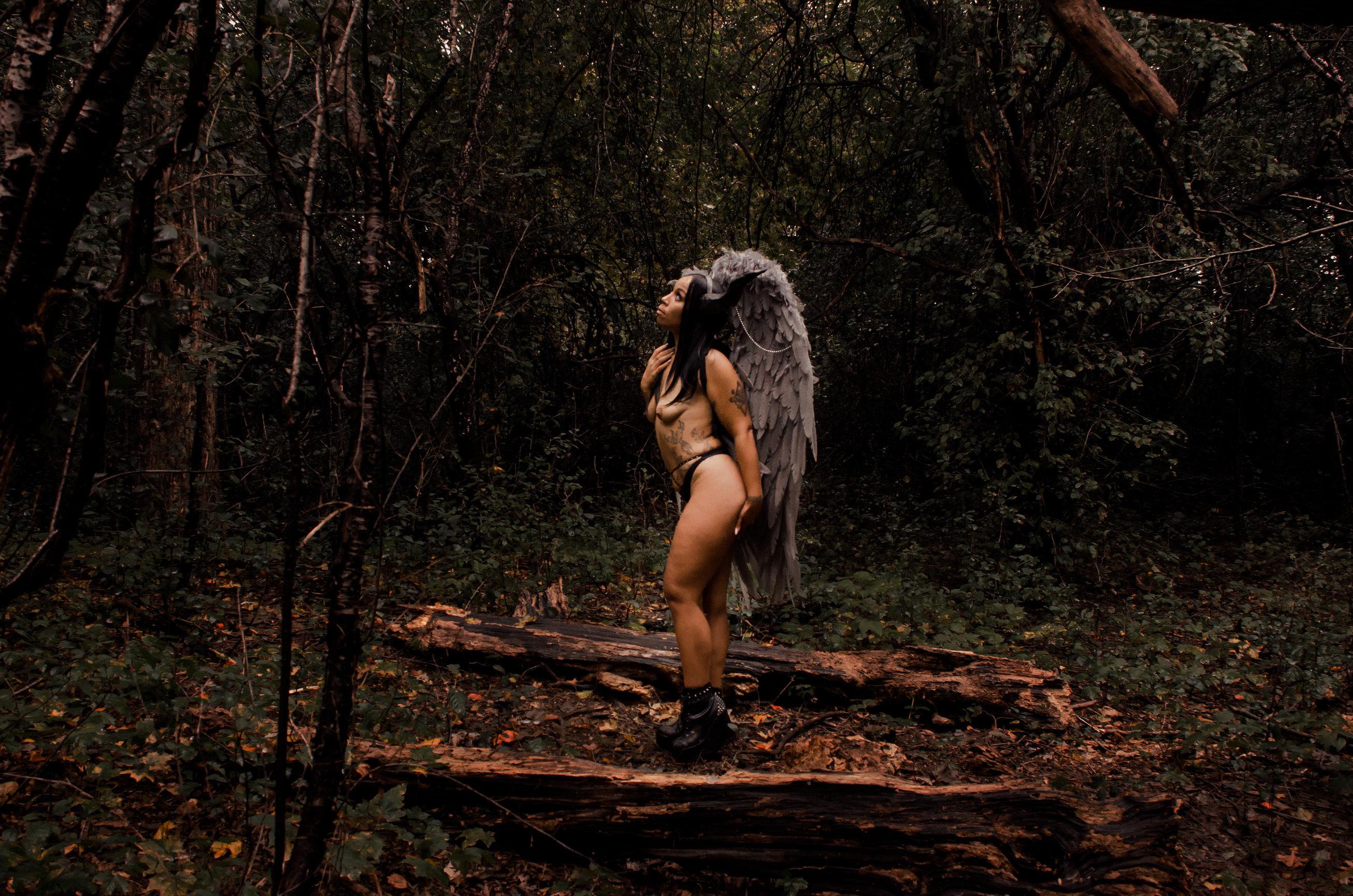

Our Sexy Halloween Cosplaying models get their Pumpkins out for Treat!
Welcome to our first special edition gallery of content created by our contributors especially for you this Halloween season!
Every image in our gallery is a limited edition NFT, available now on the Sweet Shop and OpenSea, ready to be collected and treasured forever.
Take a break from the Pumpkin Pie and enjoy a virtual fright fest this Halloween as TreatDAO rundown the most fiendishly scary video games of all time.
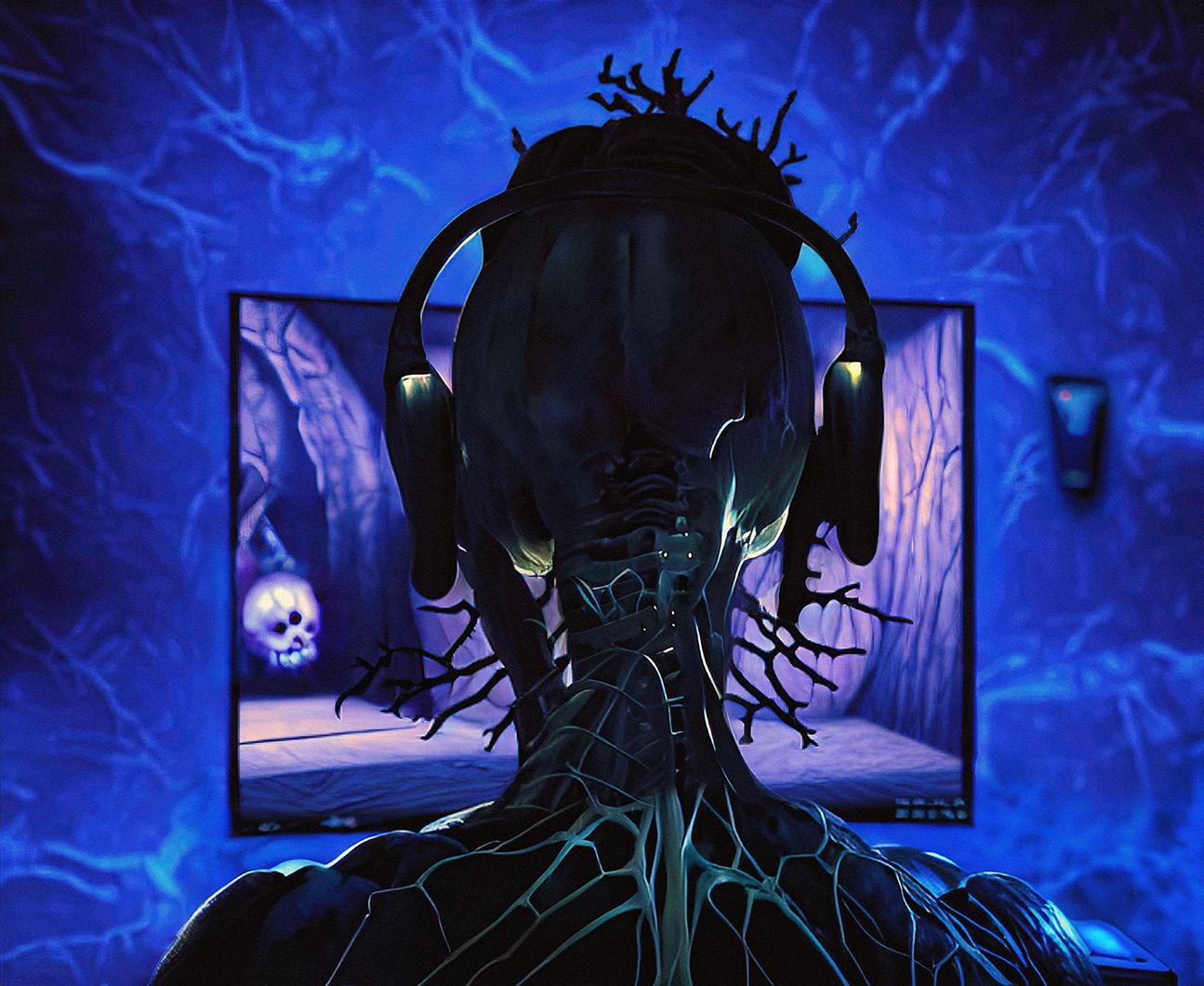
Home alone for
games to enjoy this season!
Halloween is Christmas for witches, vampires, werewolves, Cthulhu cultists, and less supernatural people of all ages who love a good scare! This is the best time of the year to enjoy spooky, creepy fun. It's the season to pull off jump scares at work, play Trick-or-Treat pranks on parsimonious neighbors, or dress up in horror costumes and terrify your family and pet dog. Scaring people is even more fun when you create a foreboding environment with candles, cobwebs, a glowing Jack O'Lantern, and a liberal scattering of rubber spiders and snakes.
However, not everyone wants to socialize, go to cosplay parties, or hit the local streets and ring doorbells. Some people prefer to be dark and brooding in their own time, savoring all the gothic spirit for themselves. If you are home alone for Halloween, it doesn’t mean you can’t have a devilishly good time. So, how to participate in the atmosphere of All Hallows’ Eve and properly scare the bejeezus out of yourself this October 31st?

Video games have done a great job of scaring us (from the safety and comfort of our bedrooms) since the earliest 1980’s consoles and PC’s. Looking back at Atari’s classics “Haunted House” and “The Evil Dead” on the Commodore 64, developers have been keen to create dark, twisted video games to fuel our imaginations. The 1990’s saw better technology and polygon graphics give birth to titles like “Alone in the Dark” and “Silent Hill”. The survival horror style of gameplay has spawned frightening modern offspring like “Dead Space” and “Resident Evil”, to single out some classics.
Today, you are spoiled for choice! So, if you own a mobile phone, a game console, or a PC, then fear not; we’ve got some haunting interactive terrors to chill the marrow in your bones and give you permanent goosebumps. So turn out the lights, lock the doors, and enjoy TreatDAO’s list of favorite fright night thrillers, guaranteed to give you a sleepless Halloween!


Resident Evil Village is available now for PlayStation 4, PlayStation 5, Stadia, Windows, Xbox One, and Xbox Series X/S.
This sequel to 2017’s cajun-flavored “Resident Evil 7: Biohazard” finds you on a mission to rescue your infant daughter from a coven of wicked monsters. The game drops you into a truly hellish fight for survival in a world of terrifying werewolves and malignant witches.
“Resident Evil Village” is a delightfully ghoulish gothic Transylvanian Disneyland-of-horrors dominated by lady-boss Lady Dimitrescu (our nomination for TOTM of October 2022), who steals every scene with her voluptuous figure and charming-but-deadly persona!

Visage is available now on PC, Xbox One, and PlayStation 4.
“Visage” was released at the height of the pandemic, on October 30th, 2020, with perfect timing to tap into the very real zeitgeist of psychological anxiety and claustrophobia people were experiencing during lockdown.
The game is a slow-burn psychological horror-adventure deep into the haunted house from hell that will get under your skin and burn its winding corridors and your descents down darkened stairwells deep into your subconscious. Anticipation and tension combine to create a delicious sense of uncanny dread. Maybe playing all alone in the dark isn’t such a great idea after all!?
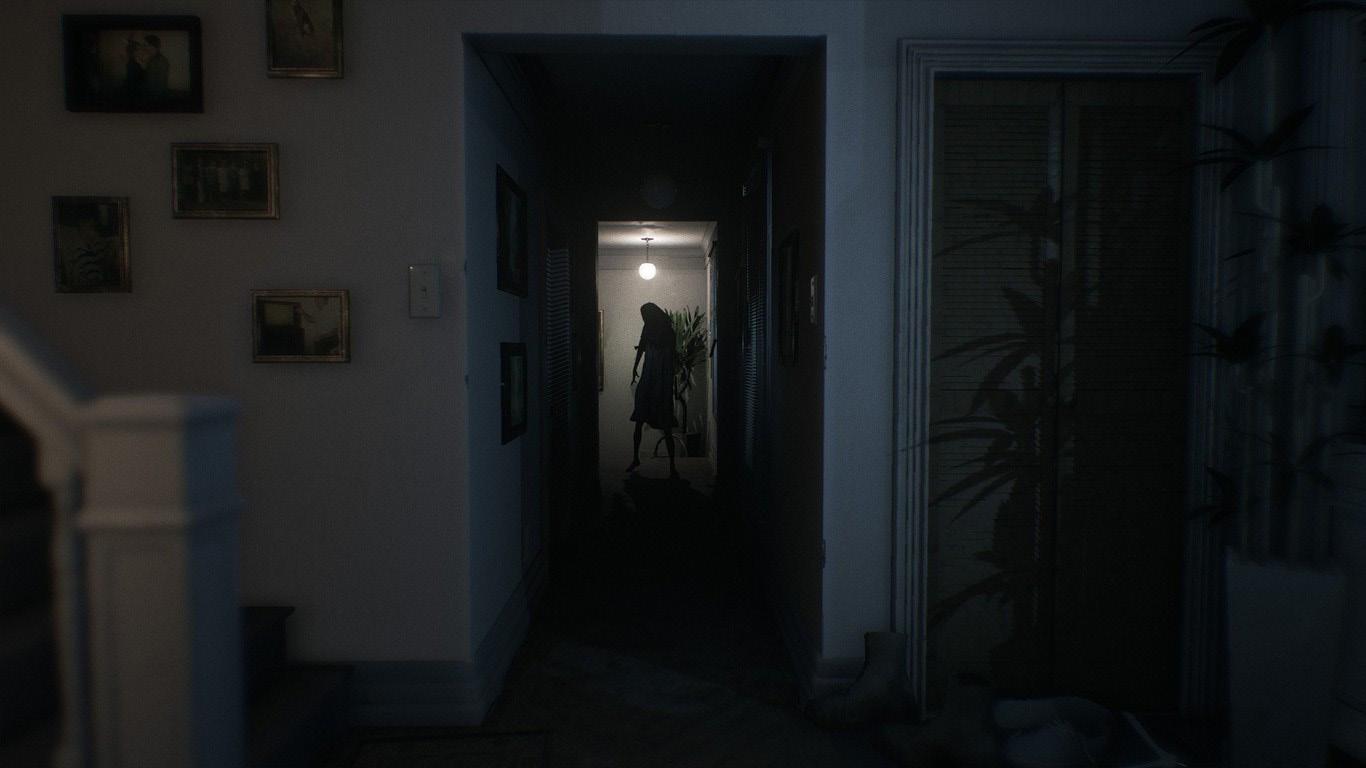
Blair Witch is available now on PC and Xbox One.
The “Blair Witch” video game returns to the familiar haunts of the Black Hills Forest from the original 1999 movie “The Blair Witch Project”, with the player taking on the role of the troubled protagonist, Ellis.
This is a harrowing, relentless, and oppressive trek to the edge of sanity, and it deserves to be lauded as one of the scariest video games in the horror genre. The game deceives the player with tricks and traps, both real and imagined, giving the player the spine-tingling sense of being constantly watched and toyed with by otherworldly malevolent forces.
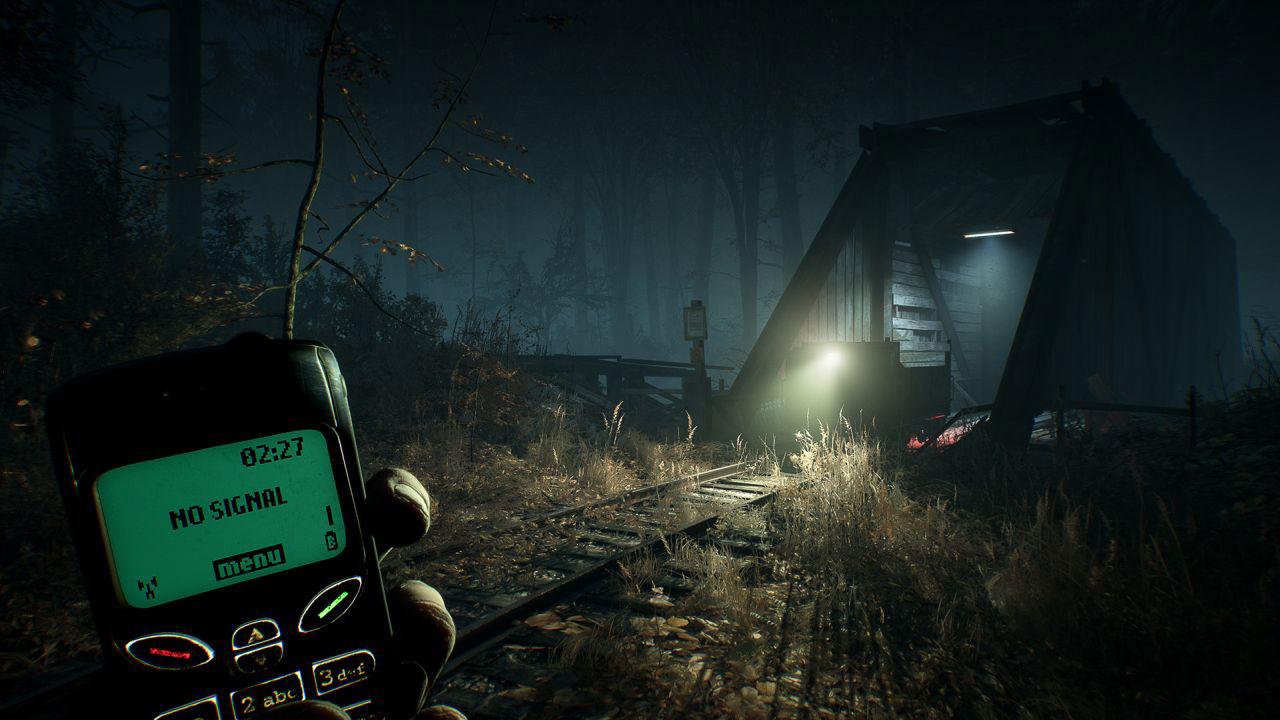

Outlast is available
The true hook of “Outlast” is not in the thrill of monsters you meet and overcome in this survival horror game, but in the nerve-jangling monsters you flee (and hide) from in pure panic and terror. It’s pure adrenaline as the great lighting and sound design force you to dread what creature lurks behind every open door and what horrors await in each new area.
You arrive at the Mount Massive Asylum, determined to explore and uncover the secrets of the institution, only to jump out of your skin and run for your virtual life, as the deranged mental patients take over the asylum. Thirsting for blood, your blood.
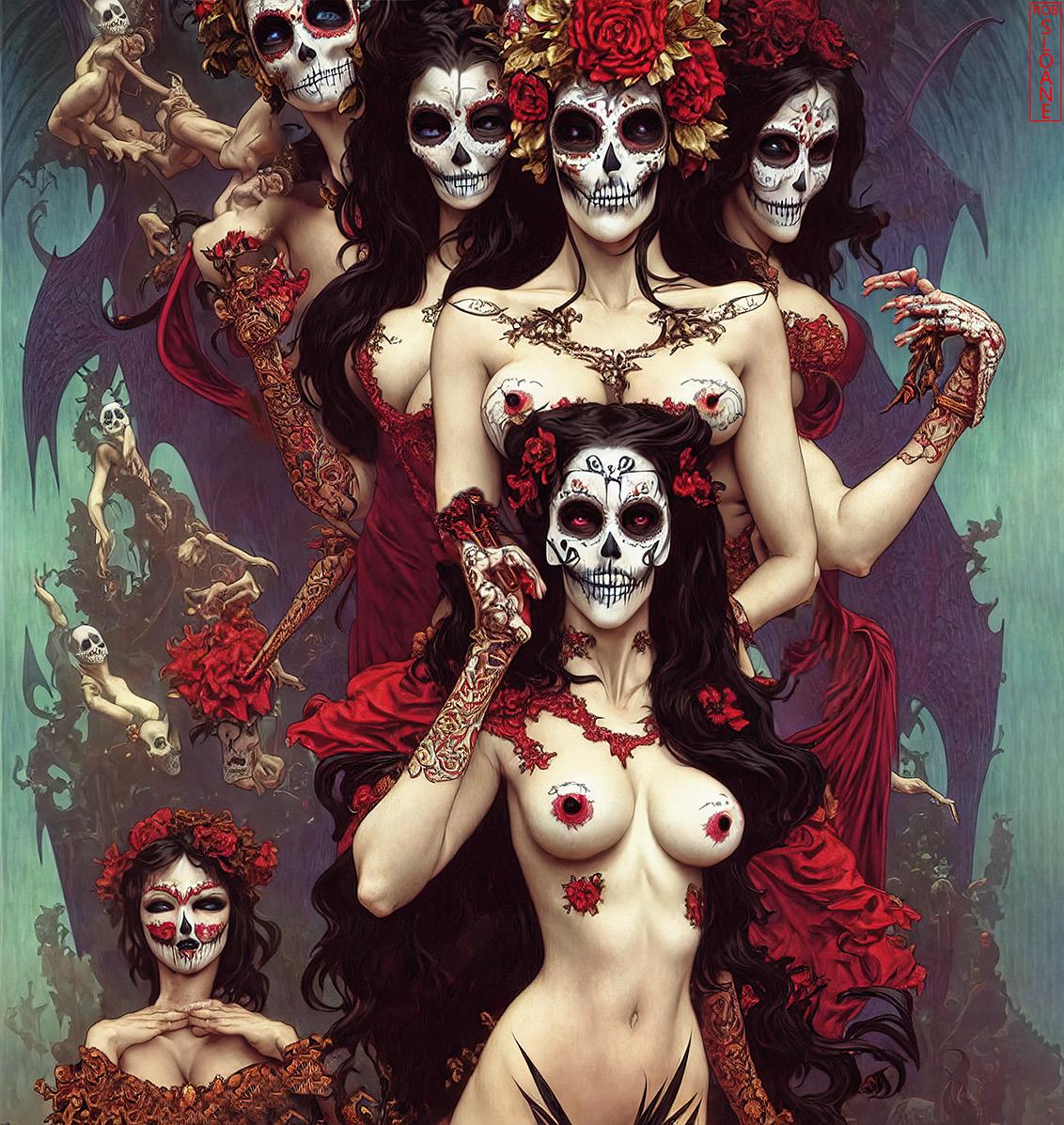

“Alien Isolation” is a spiritual successor to Ridley Scott's 1979 masterpiece “Alien”, creating a palpable atmosphere of science fiction angst by nailing much of the artistry in the retro-futuristic visual and audio design that made the film so distinctive.
In this stealthy survival horror, you don the claustrophobic space suit as Amanda Ripley, the daughter of the original film’s space truckin’ heroine, played on screen by Sigourney Weaver. Tasked with exploring and fixing the sprawling Sevastopol Space Station, the situation soon descends into chaos and terror, as you become the hunted prey of the preternatural xenomorph.

characters; the Bachelor, the Haruspicus, and the Devotress (two playable initially, the third unlockable) arrive in a settlement in the Russian steppes.
Things go from bad to catastrophically worse as a nightmarish infection breaks out and the town is quarantined. The game is described as an existential survival role-playing adventure and was originally released in 2005 in Russian. The latest edition, “Pathologic Classic HD", is a remaster released on PC with a full translation into English.
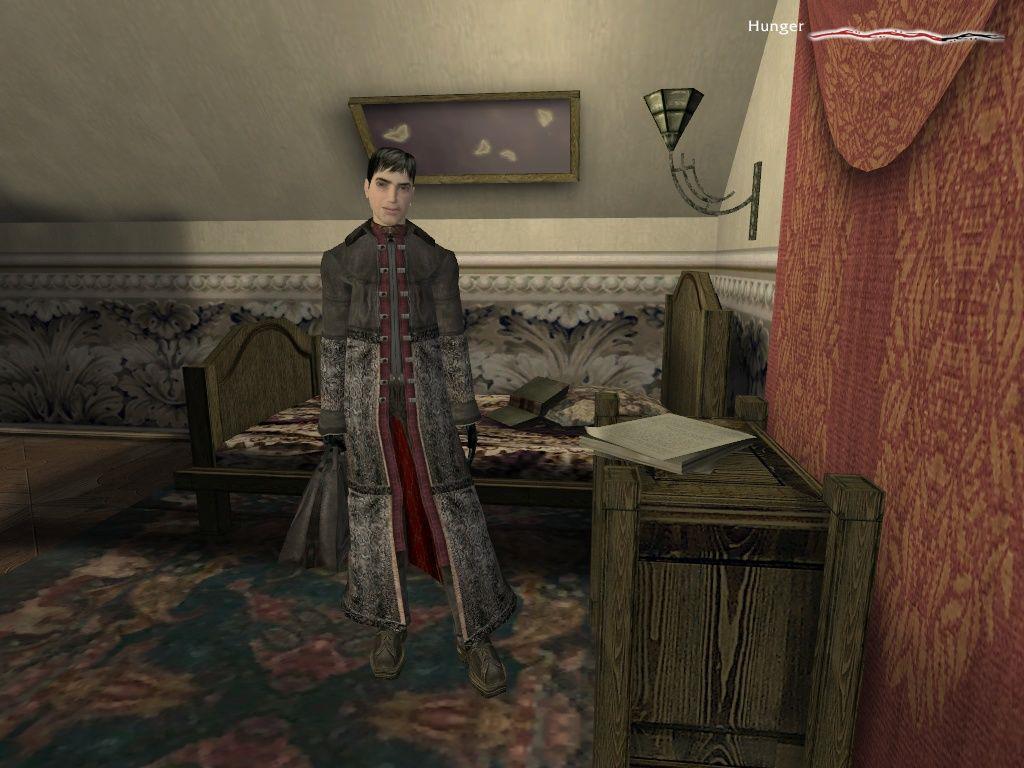
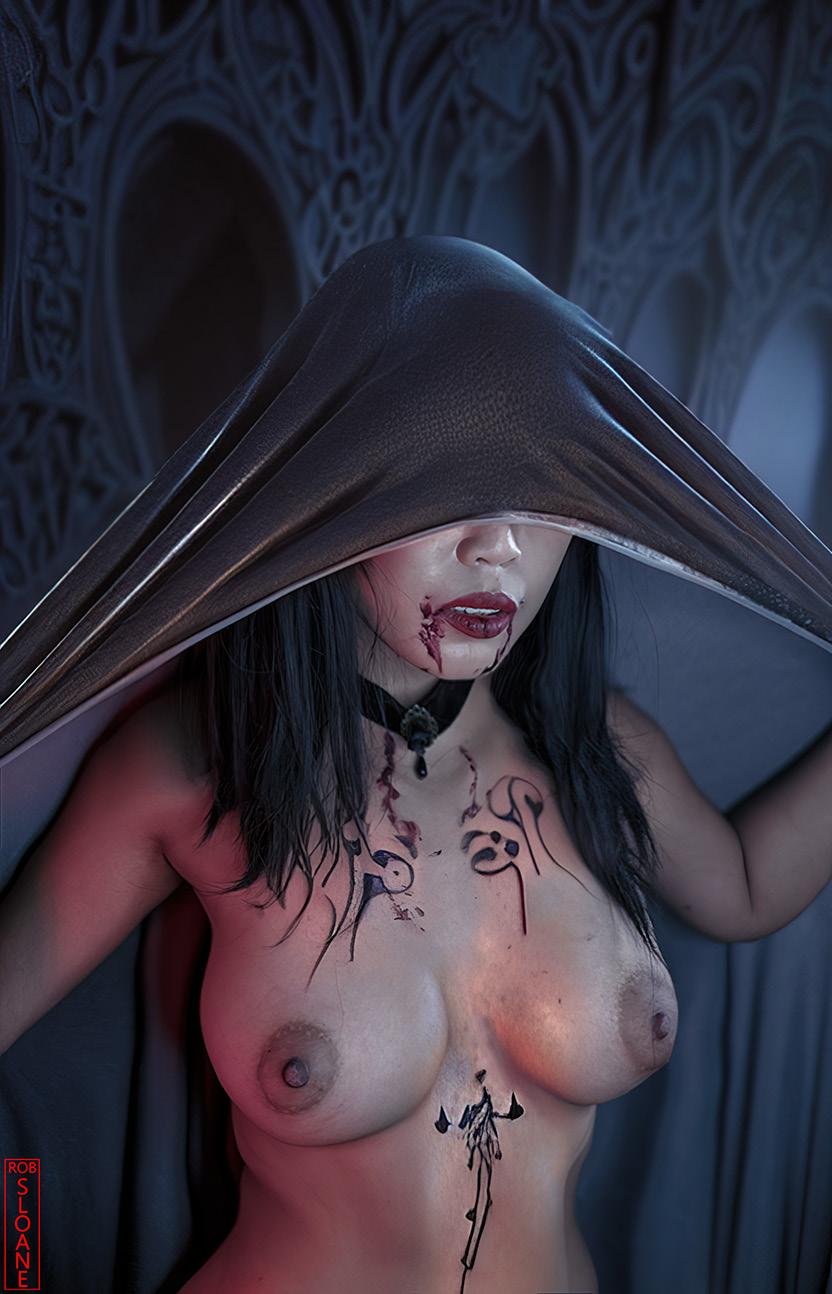
“Dead by Daylight” is an asymmetrical multiplayer mobile game. The game simulates the best of the 1990’s slasher movies by pitting a team of four survivors against a killer player monster. The premise is simple; the team must work together to fix generators, get to the exits, and escape the lair before they are killed or captured by the monster.
The cat and mouse emergent gameplay is intense and challenging, balanced between the teamwork of the survivors and the single-minded pursuit of the killer, perfectly recreating the scenarios and close-call moments of films like “Halloween”, “Friday the 13th” and “Scream”. Invite your friends for some multiplayer mayhem to die for!


“Five Nights at Freddy’s” is a first-person survival game with an inventive premise. The game puts you in the shoes of a lone night watchman guarding a pizzeria for five nights as you are hunted by a grizzly gang of animatronic anthropomorphic animals. The tension is gut-wrenching as night falls and the mascots from hell patrol the hallways and rooms, looking for fresh meat and bones to grind in their gears.
You have nowhere to run or hide. To survive the ordeal, you simply have to guard the security office from the monsters for your tenure of five days (with a bonus sixth day... nope!). You do this by checking the cameras, turning on lights, and locking down doors. Every action consumes your limited battery life. You really don’t want to be alone in the dark when these mechanical nightmares come knocking. You may never order pizza again after five nights of this gut-wrenching horror!

You play the role of a boy who wakes up alone in a forest with no clue as to how you arrived there or where to go next. You start to explore the uncanny black and white noir environment, soon to discover that everything wants to kill you. Now you do have a goal: to get the fuck out of Dodge and escape this dark, forbidding, horrific world!
“Limbo” is a fiendishly contrived platform puzzle game that wants to kill you at every turn. However, it achieves your demise with a gorgeous combination of neo-noir visuals, an atmospheric and original style dripping with imaginative flair, and intuitive systems and simple touch-screen controls. You will want to keep coming back for another descent into the darkness.
Ah, so you’ve played our recommended games this year and you’re still not a nervous wreck? Challenge accepted: join us next year, horror junkies, when you’ll have that VR headset for next-level Halloween and we’ll help you get fully immersed in the Metaverse of Nightmares, and the most horrifyingly out-of-body VR scare-fests and worlds of horror—until then, sleep tight.
 Limbo for mobile is available now on IOS, Android, Nintendo Switch, and Playstation Vita
Limbo for mobile is available now on IOS, Android, Nintendo Switch, and Playstation Vita
 Devan Creative Group
Devan Creative Group
